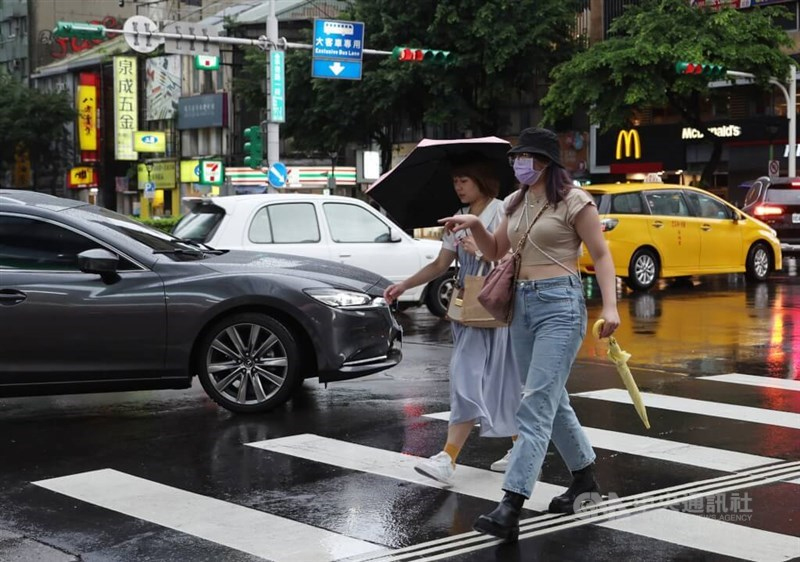In an ongoing effort to enhance road safety and strengthen pedestrian rights, Taiwan’s Ministry of Transportation and Communications (MOTC) announced that its newly proposed amendments to pedestrian protection laws have been reviewed by the Cabinet and are set to be submitted to the Legislature for final approval. These amendments are a continuation of pedestrian-focused traffic safety reforms launched in mid-2023, which have already shown measurable results in reducing pedestrian injuries and fatalities.
Background: What Prompted These Reforms?
In recent years, Taiwan has grappled with a high number of traffic-related injuries and deaths, particularly involving pedestrians. In 2023 alone, 17,660 pedestrian injuries and 380 fatalities were recorded. Public outcry and media coverage over reckless driving, lax enforcement, and insufficient pedestrian infrastructure pushed the government to act.
The MOTC responded with a revision to traffic safety laws that took effect on June 30, 2023. The reform included stricter penalties for drivers failing to yield to pedestrians at crosswalks, enhanced law enforcement tools, and increased public awareness campaigns.
One year later, the reforms have shown a modest but encouraging impact. According to MOTC data:
- Total pedestrian injuries dropped to 17,162 in 2024 (down by 498 cases).
- Fatalities declined from 380 in 2023 to 366 in 2024.
While this decrease may appear small, officials say it’s an indication that the reforms are beginning to yield results, and additional measures are required to sustain and accelerate progress.
What’s in the New Amendments?
Although full details of the proposed legislative amendments have not been publicly disclosed, MOTC officials have provided an outline of key objectives:
1. Stricter Penalties for Crosswalk Violations
The new proposal recommends increasing fines for motorists who fail to stop for pedestrians at crosswalks. This includes expanding the definition of violations to cover more scenarios (e.g., turning vehicles not yielding to walkers).
2. Enhanced Surveillance and AI Traffic Monitoring
The MOTC plans to integrate AI-based surveillance systems at high-risk intersections to automatically detect and penalize violations, aiding law enforcement and reducing human oversight dependency.
3. Funding for Municipal Infrastructure Upgrades
Municipalities will receive subsidies to improve pedestrian facilities such as sidewalk continuity, raised crosswalks, pedestrian-only signal phases, and tactile paving for the visually impaired.
4. Nationwide Road Safety Education Campaign
The amendments will be paired with a new education initiative targeting drivers, students, and seniors—groups most vulnerable to or responsible for pedestrian-related incidents.
Expert Opinions: A Step Forward, But More Needed
Traffic safety experts praised the MOTC’s multi-pronged approach but warned that enforcement and public attitude remain the biggest hurdles.
“Taiwan has great laws on paper, but the challenge is in consistent enforcement,” said Dr. Yu Chih-min, a transportation policy analyst at National Taiwan University. “Without visible policing and automated enforcement, compliance will remain low.”
Dr. Yu also highlighted the importance of involving urban planners in creating walkable communities, not just reactive law enforcement.
Public Response and Next Steps
Public reaction has been mixed. While many welcome increased safety, others—particularly taxi and delivery drivers—have voiced concerns about over-penalization and tighter regulations impacting their work routines.
The proposed amendments, if passed by the Legislature, could go into effect as early as January 2026. The government aims to continue evaluating road safety metrics quarterly to determine the long-term effectiveness of these policies.
FAQs
Why is Taiwan prioritizing pedestrian protection now?
Rising pedestrian fatalities and growing public concern over road safety prompted the government to act.
What changes were made in 2023?
Laws were amended to penalize failure to yield at crosswalks, and the government began a public awareness campaign.
Are pedestrian fatalities still high in Taiwan?
Yes, though there was a drop in 2024, with 366 deaths compared to 380 in 2023.
What’s new in the 2025 amendments?
Proposed stricter penalties, expanded surveillance tech, improved pedestrian infrastructure, and education campaigns.
When will the new laws take effect?
If approved by the Legislature, they could be implemented in early 2026.


